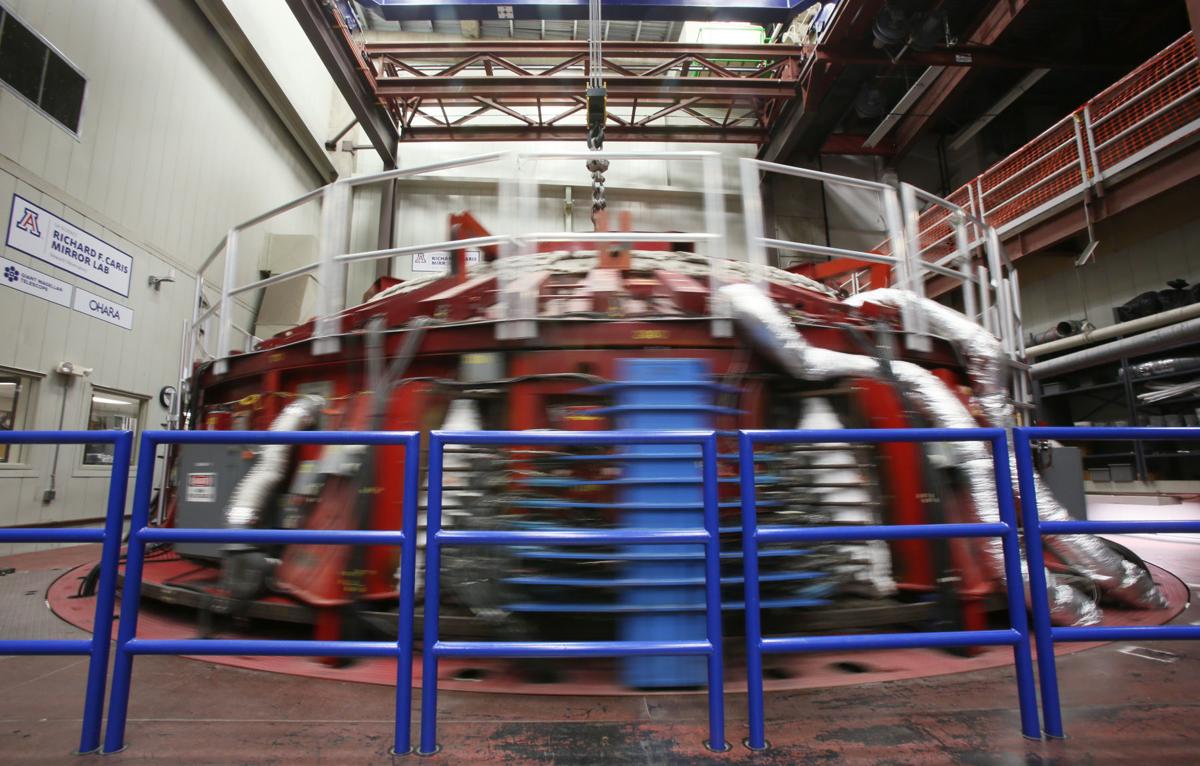A giant red rotating oven spun under the University of Arizona football stadium in the Richard F. Caris Mirror Lab on Friday, marking the beginning of the casting process for the fifth mirror of the Giant Magellan Telescope.
This was also the “20th casting of a major mirror. A major milestone for the Mirror Lab,” said Buell Jannuzi, director of the UA’s Steward Observatory.
Construction on the GMT began in 2015 at the Las Campanas Observatory in the Atacama Desert in northern Chile. The site is ideal for clear, dry skies, with little atmospheric disturbances that cause twinkling starlight, which is pretty to look at but problematic for astronomers trying to study it.
When completed, the GMT will be the largest ground-based optical telescope in the world, made up of a seven-mirror mosaic, each measuring 27 feet in diameter. The UA lab is the only one in the world capable of making the giant mirrors.
Together, the mosaic will usher in the next generation of extremely large telescopes.
The images collected with this massive telescope will be 10 times sharper than the images the Hubble Space Telescope captures in infrared light.
Inside the UA oven is 20 tons of glass being melted to more than 2,000-degrees Fahrenheit. The glass takes on a thickness like cold honey, Jannuzi said.
The melted glass is spun into a mold to make the mirrors both stiff and light, said Buddy Martin, project scientist on the Mirror Lab’s polishing team.
The heating and spinning process will cause the top side of the glass structure to be curved. This is the surface that will one day become the mirror. It will be shaped and polished for three months then sprayed with a fine layer of aluminum to achieve a surface so smooth that differences cannot be seen with the naked eye. It is off this surface that incoming starlight will bounce.
The bottom side of the glass structure was melted into a lightweight honeycomb lattice that will help support the mirror’s shape.
The mirrors will actually be 80 percent hollow, Jannuzi said. This helps with cooling, an important feature for sharp images.
There are four mirrors in the lab. The fifth is being stored off-site. The glass for the sixth mirror to be cast is being stored in a warehouse in South Tucson. The glass for the seventh mirror is being made in Japan.
Although not all mirrors will be installed until 2025, enough will be installed by 2023 to allow the first light in from the heavens.
The telescope will be used to look deep into the past of the universe and study the chemical signature of alien atmospheres. “We want to meet the neighbors,” Jannuzi said.
The GMT Organization’s contracts with the UA to fabricate the mirrors are anticipated to total $200 million, the UA said.





